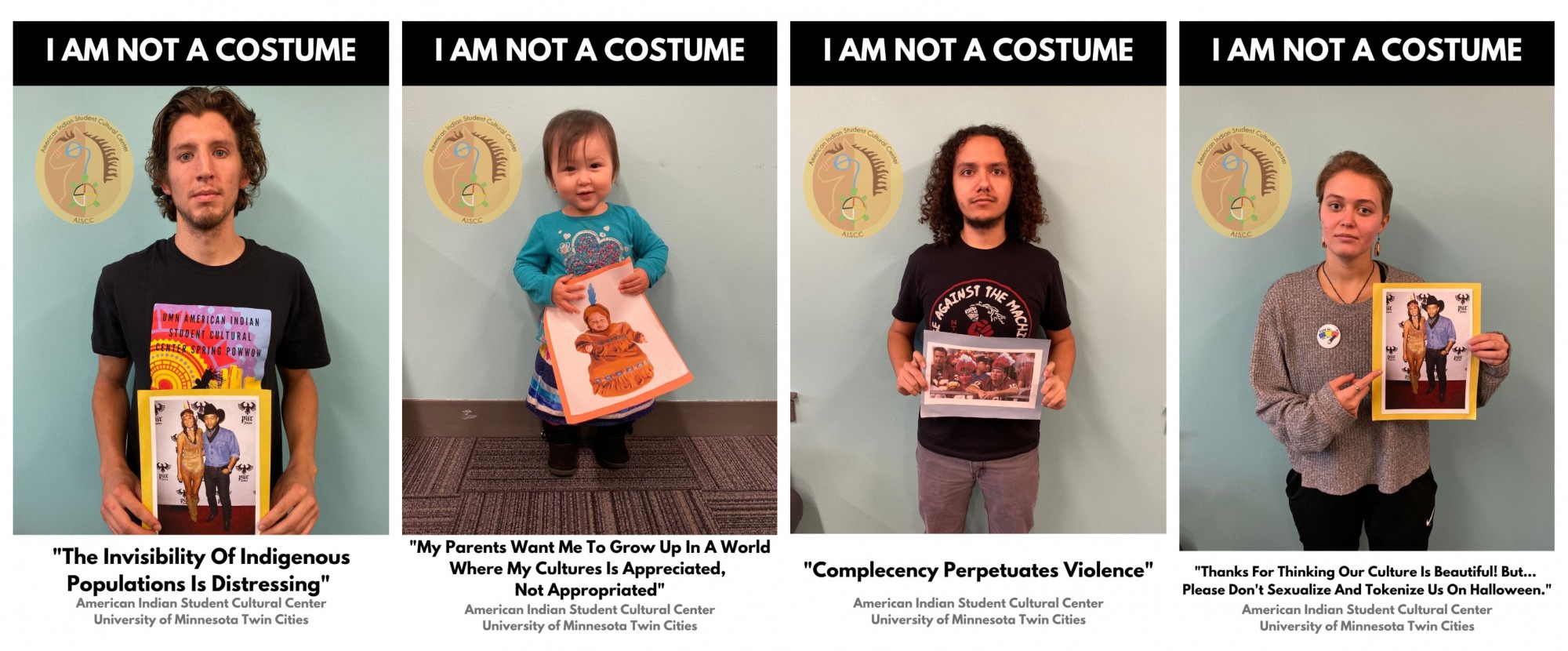Part of the Halloween season for University of Minnesota student Meenakshi Mattson – and for many people of color – is seeing her culture appropriated.
Mattson said she has seen saris, dubbed as “Bollywood dancer costumes,” sold on Amazon and at Party City.
“It’s very otherizing,” said Mattson, a fourth-year psychology student. For Mattson, as a transgender person, saris have a deep cultural significance because they’re connected to how she expresses her femininity.
“To see it whittled down to something that’s just a luxury costume or just like this little tacky piece that you can wear once a year for Halloween, that’s not OK for me.”
For six years, the University’s American Indian Student Cultural Center has been addressing cultural appropriation with its annual “Our Culture is Not Your Costume” campaign in the weeks leading up to Halloween.
“It’s raising awareness for the lack of understanding of cultural identity and what it means to people,” AISCC board members said. The AISCC board asked to be referred to as one entity in order to provide a more representative perspective of the indigenous community.
The AISCC creates and distributes posters of University students holding examples of culturally insensitive costumes in addition to quotes from students about how these representations impact them.
By showing this perspective, the board said it hopes to help people make educated decisions about their costumes while being respectful.
Many offensive Halloween costumes sexualize Native women by portraying them in revealing clothing, the board said. “You’re endangering Native women in that sense …1 in 3 Native women can face sexual assault and rape in their lifetimes because it’s seen as a conquer thing. How much of that is perpetuated by Western culture?”
Other examples of offensive costumes reflect a lack of cultural understanding.
“A guy walking around with a headdress made of chicken feathers really takes away from the importance of a real headdress as earned, and only a few people will ever have the opportunity to wear it in their lifetime,” the board members said.
This year the board is working with the Multicultural Center for Academic Excellence to help distribute the posters both online and around campus.
Second-year student Sorena Yang also grew up seeing parts of Asian culture worn as Halloween costumes. She remembers seeing people around her dressed as kung fu fighters or wearing kimonos on Halloween.
Wearing cultural and traditional clothing as Halloween costumes is disrespectful, Yang said.
“It’s just a costume you put on for a day, and it’s like nothing,” she said. “You’re just wearing it to wear it. It’s affecting us. You’re not representing us. You don’t support minorities or those that are marginalized at all. They’re just wearing it because they can.”
The representations take away from the significance of a culture or tradition by turning it into a consumable product, Mattson said. “They don’t really think of [non-European cultures] as true cultures or human beings. They think of it as something that’s just very performative.”
The AISCC board said by giving people the possibility to be intentional about Halloween ahead of time, they hope people will reconsider wearing cultural clothing as a costume.
“There are peoples that actually do subscribe to this culture, and it’s disrespectful [to appropriate it] and leads to more negative stereotypes and judgements against that community,” the board said.







